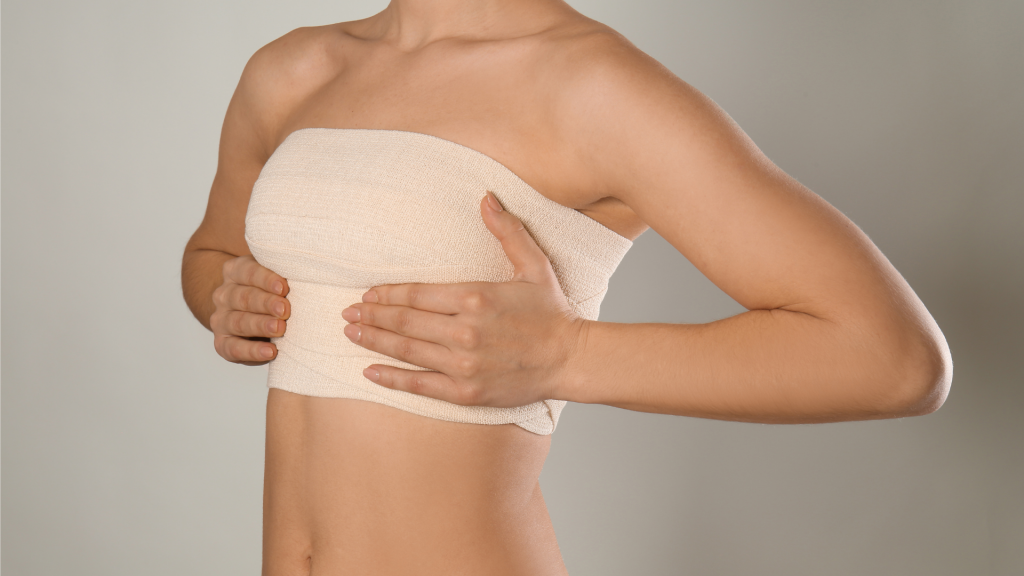- Home
Breasts serve as an essential part of a woman’s identity. Out of all cancers, breast cancer is considered the most uncomplicated disease to treat. Still, it comes at a cost where women must sacrifice their breasts and appearance.
Depending on the spread of the cancer cells, breasts must be removed partially (partial mastectomy) or completely (total mastectomy).
The bright side is that modern medicine offers methods for women to cope with breast removal, like breast reconstruction. Keep reading to know more about breast reconstruction.
What is breast reconstruction?
Breast reconstruction is the creation of the shape of the breasts after a complete mastectomy or lumpectomy (removal of a portion of the breasts affected by cancer).
Based on when the surgery is done, breast reconstruction is of two types;
- Immediate reconstruction: It happens right after the surgical removal of the breasts affected by cancer cells.
- Delayed reconstruction: It happens months, maybe years, after breast removal.
Both breasts are rebuilt if the surgical procedure necessitates the removal of both breasts (bilateral mastectomy). If only one breast is removed (unilateral mastectomy), the prosthetic breast is constructed similarly to the other breast.
What are the types of breast reconstruction?
There are two important types of breast reconstruction;
- Flap reconstruction
It involves autologous tissue or tissue from the human body. To construct the breast, the surgeon takes the tissue from other body parts, like the lower abdomen, thighs, or back.
Autologous tissue, also known as a flap, involves fat, skin, blood vessels and muscle removed from that portion of the body.
Depending on its connection with the blood supply, the flap is divided into two;
- Pedicled flap: Flap is moved through the body to retain the blood supply.
- Free flap: The flap is detached from its blood supply and then attached to the chest’s blood vessels.
Based on the tissues taken, the types of flap reconstruction are as follows;
- DIEP flap: The surgeon takes skin, fat and blood vessels from the lower belly but no abdominal muscle.
- TRAM flap: The surgeon takes the lower belly’s skin, fat, blood vessels and muscle.
- Latissimus dorsi (LD) flap: The surgeon takes tissue and muscle from the back, which is a pedicled flap.
- IGAP flap: The surgeon takes the tissue but no muscles from the back.
- SGAP flap: The process is the same as the IGAP flap but uses a different group of blood vessels.
- PAP flap: Tissues from the inside and back of the thighs are used to rebuild the breast. But no muscles are used.
- TUG flap: It involves both muscles and tissues of the inner and back sides of the thighs.
- SIEA flap (or SIEP flap): The procedure involves the skin and fat from the lower belly but no abdominal muscle. They use different blood vessels.
- Implant reconstruction
Implant reconstruction involves surgeons using saline or silicone implants to construct breasts. Types of implant reconstruction are as follows;
- Under the chest: The surgeon places the implant under the chest muscle.
- Above the chest: The surgeon places the implant on top of the chest muscle.
- Tissue expander: The surgeon inserts an expander beneath the skin, which swells into a breast after a few sessions of saline filling.
Can the surgeons reconstruct the nipples and areola?
Surgeons can reconstruct the nipples and areola. They begin the process after the breast mound on the chest is stable.
The nipple and areola are created by skin grafting, in which a piece of the skin is removed from other body parts, such as the abdomen.
In some cases, surgeons preserve the nipples and areola. Then, they transfer it to the reconstructed breasts, a process called the nipple-sparing mastectomy. Sometimes, women opt to go for a 3D tattooing of an areola instead of getting reconstructed.
What are the advantages and disadvantages of breast reconstruction?
The advantage of breast reconstruction surgery is that women will feel more confident about their physical appearance. A cancer diagnosis is traumatic, and losing an essential part of their identity can scar their confidence. Experienced surgeons construct the breasts in such a way that they will resemble real breasts.
The breast reconstruction process comes with its own set of challenges. First, it does not serve the function of a normal breast, like breastfeeding. Women who underwent unilateral mastectomy might feel like they have two different structures, but they can eventually get used to it.
Women should be prepared for possible health complications like;
- Pain at the donor site
- Fat necrosis
- Blood clots
- Scars
In conclusion,
It is totally up to the patient to decide whether or not to have a breast reconstruction. However, women should not avoid therapy and reconstruction surgery because they are afraid of the negative effects, which may be properly managed with drugs.
Those who do not wish to have their breasts rebuilt might choose a breast prosthesis, which consists of a particular bra with breast structure.
Instead of using prostheses, some women choose to have a flat chest. There are multiple options for every condition. Patients should not lose hope while dealing with a disease like cancer.
How can CancerMitr help?
We collaborate with the best breast cancer specialists and breast surgeons, who carry out the procedures successfully. As a result, we assisted many patients across India.
Check our website for more information on our many services and packages, including breast cancer treatment and reconstruction.

